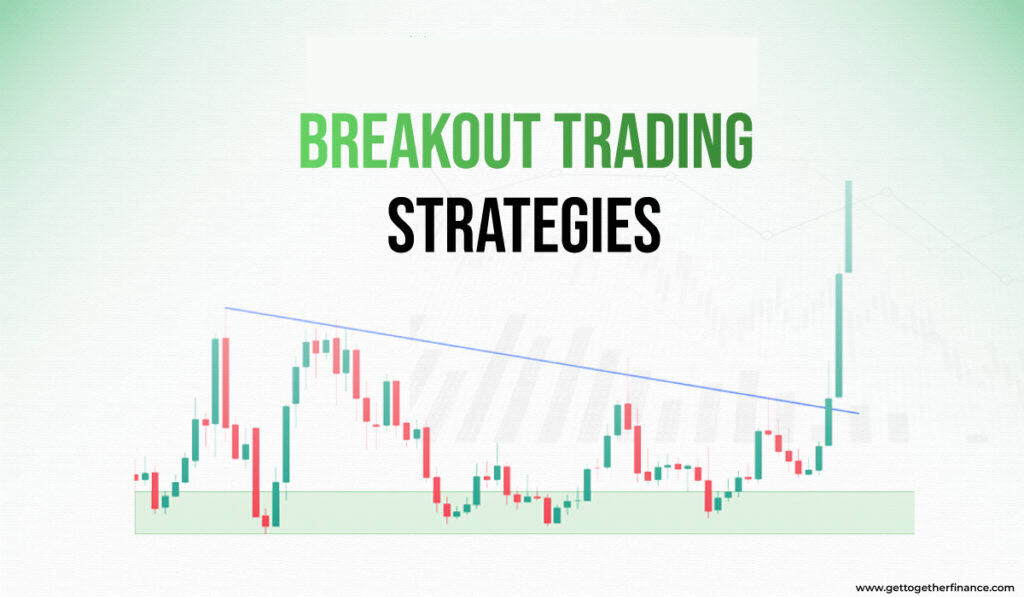By ATGL
Updated August 3, 2025
A breakout trading strategy represents one of the most widely adopted approaches among active traders seeking to capitalize on significant price movements. This method involves identifying when an asset’s price moves decisively beyond established support and resistance levels, typically accompanied by increased trading volume. The breakout trading method allows you to position yourself at the early stages of potentially substantial price trends, making it a cornerstone of many successful smart trading strategies.
Understanding breakout patterns requires mastery of several key concepts: recognizing valid price breakouts, utilizing technical indicators for trading to confirm signals, comprehending the psychological forces driving market movements, and implementing effective risk management techniques.
What Defines a Breakout in Trading?
A breakout in trading occurs when an asset’s price moves beyond a clearly defined support or resistance level with conviction and volume. Support levels represent price floors where buying interest historically emerges, while resistance levels act as ceilings where selling pressure typically increases. When price action decisively penetrates these boundaries, it signals a potential shift in market sentiment and the beginning of a new directional move.
Valid breakouts share several characteristics that distinguish them from temporary price spikes or false signals. The price movement must be substantial enough to clear the previous level by a meaningful margin, often accompanied by a notable increase in trading volume.
Regarding profitability, breakout trading can indeed generate substantial returns when executed properly. The strategy’s effectiveness stems from its ability to capture significant price movements during their initial phases. Professional traders typically achieve success rates between 40% and 60% with proper breakout strategies, but their winners often substantially outweigh their losers in terms of magnitude.
Identifying Reliable Breakouts: Key Technical Indicators
Successfully identifying reliable breakouts requires a systematic approach that incorporates multiple technical indicators to validate price movements. The most effective breakout traders employ a combination of volume analysis, momentum indicators, and price action patterns to confirm their trading signals.
When evaluating which indicator works best for breakout trading, volume stands out as the single most important confirming factor. Without substantial volume support, even the most convincing price breakouts often fail to maintain their momentum and result in false signals.
Volume Confirmation in Breakouts
Volume analysis serves as the primary validation tool for authentic breakouts. When price breaks through a significant support or resistance level, trading volume should increase substantially compared to recent averages. This volume surge indicates that institutional traders and significant market participants are actively driving the price movement.
Professional traders typically look for volume increases of at least 50% above the recent average, with the most reliable breakouts showing volume spikes of 100% or more. This substantial increase confirms that the breakout represents a genuine shift in market sentiment rather than temporary price manipulation.
Using RSI and MACD to Confirm Breakouts
The combination of RSI and MACD provides powerful confirmation signals for breakout opportunities. For upward breakouts, look for RSI readings between 50 and 70, indicating strong momentum without extreme overbought conditions. MACD should show a bullish crossover or increasing histogram bars, confirming that buying pressure is accelerating.
The most reliable breakout setups occur when both indicators align with the breakout direction. However, divergences between price action and these momentum indicators often signal weakening breakouts that may fail or reverse.
Common Breakout Trading Strategies and Methods
Two primary breakout trading methods dominate professional trading approaches: momentum breakouts and breakout pullbacks. Each strategy offers distinct advantages and suits different market conditions.
Momentum breakouts involve entering trades immediately as price penetrates support or resistance levels with strong volume. This aggressive approach captures maximum profit potential from explosive price movements but requires quick decision-making and tight risk management.
Breakout pullback strategies offer a more conservative approach by waiting for price to retest the broken level before entering trades. After an initial breakout, price often returns to test the former resistance level as new support. This retest provides a lower-risk entry point with better risk-to-reward ratios.
Determining which breakout strategy works best depends on individual risk tolerance, trading capital, and market conditions. Momentum breakouts excel in trending markets with strong directional bias, while pullback strategies perform better in choppy or consolidating markets where false breakouts are more common.
Why Breakouts Happen: The Trader’s Psychology Explained
Understanding the psychological forces behind breakouts provides crucial insight into their timing and sustainability. Breakouts occur when the balance between buyers and sellers shifts decisively in favor of one side, often triggered by fundamental developments, technical patterns, or emotional extremes in trader sentiment.
Fear and greed drive most significant breakouts. When prices approach major resistance levels, fearful holders begin selling their positions, creating selling pressure. However, if buying demand exceeds this selling pressure, prices break through resistance, triggering stop-loss orders from short sellers and attracting momentum traders.
When and How To Enter and Exit Trades on Breakouts
Timing entry and exit points represents the most critical aspect of successful breakout trading. For momentum breakout entries, wait for price to clear the breakout level by a meaningful margin before entering positions. This buffer helps filter out false breakouts and increases the probability of capturing genuine moves.
Stop-loss placement requires careful consideration of market volatility and the specific breakout pattern. Most professional traders place stops 2% to 3% below breakout levels for stocks or at the most recent swing low. Profit targets should reflect the potential magnitude of the breakout move, often using measured move techniques or targeting previous support/resistance levels.
Risk Management Tips for Breakout Traders
Effective risk management separates consistently profitable breakout traders from those who experience boom-and-bust cycles. The high failure rate of breakout attempts makes disciplined risk control essential for long-term success.
Position sizing represents the foundation of breakout risk management. Professional traders typically risk no more than 1% to 2% of their trading capital on any single breakout trade, regardless of their confidence level. This conservative approach allows you to survive the inevitable string of losing trades while preserving capital for genuinely profitable opportunities.
Regarding whether breakout trading represents a sound strategy overall, the answer is yes when implemented with proper risk management and realistic expectations. While individual breakout attempts fail frequently, the magnitude of successful breakouts often compensates for multiple smaller losses.
Get the Trading Edge You Need To Win Breakouts
Mastering breakout trading strategy requires dedication, discipline, and continuous education. The most successful practitioners combine technical analysis skills with psychological awareness and rigorous risk management practices. This comprehensive approach transforms breakout trading from gambling into a systematic method for capturing significant market movements.
The integration of volume analysis, momentum indicators, and proper investment strategies creates a robust framework for identifying and profiting from breakout opportunities. Above the Green Line’s membership program provides the advanced tools, real-time analysis, and professional guidance necessary to excel in breakout trading. Join our community of successful traders and transform your breakout trading results with proven strategies and professional support.
Related Articles












